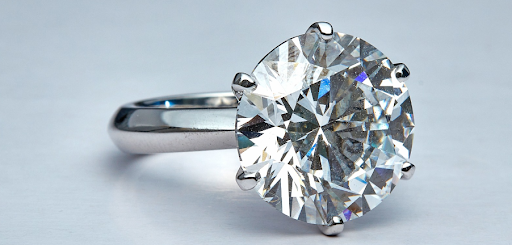
Color and clarity are the two of the 4Cs of diamond grading that are most visible and detectable to the human eye. The amount of yellow or brown tint that can be seen in a diamond is referred to as its color. Nitrogen atoms in the diamond's structure are to blame. When we talk about the clarity of a diamond, we mean the presence of natural diamond inclusions, such as crystals of other minerals or black carbon or the minuscule internal breaks known as feathers. We'll do our best to refresh your memory on what to look for and what to expect when it comes time to pick out your center stone.
Face-up, or looking at a diamond as you would normally, D-J colors will not show any noticeable color, but comparing a D to J side-by-side will be obvious. As a general rule, any diamond in the colorless or near colorless range will present a colorless diamond that does not have a noticeable tint. It is best to stick to a higher "D-I" color for these shapes because they tend to show more color than other shapes, such as ovals, radiants, and pear-shaped stones. You can get away with less color in round brilliants, emerald cuts, and asschers because these cuts are better at masking the color.
Clarity is also important, as inclusions in a more included stone can obstruct light flow. Diamonds with inclusions that are visible to the naked eye typically fall within the range of flawless to slightly included 1 and SI2, depending on the quality and size of the stone you are looking for. It is possible to find SI2 stones that are clean to the naked eye and that can save you money without sacrificing beauty by working with a trained professional like a Diamond Registry experts. With the naked eye you won't be able to see any inclusions in VS2 to SI1 stones, but the price is significantly lower than for extremely rare Fl, IF, VVS1, and VVS2 gems Since the tables of step-cut diamonds like emerald and asscher are large, inclusions can be clearly seen in the center of the stone. In contrast, many of the other shapes, such as brilliant cuts, will hide any inclusions beneath their faceting..
Although both color and clarity are important, your personal preference is the most important factor. At Diamond Registry, we recommend that our clients find the largest, most well-balanced stone for their budget by following these guidelines: You can find a beautiful diamond with no color or inclusions if you stay within the color range of F-J and the clarity range of VVS1-SI2!! When it comes to helping our clients find the perfect engagement ring, we take great pride in working closely with them. Whether you visit us in person or receive our recommendations in the form of HD videos sent to your email, you can rest assured that you will find the ideal stone at the best possible price.

